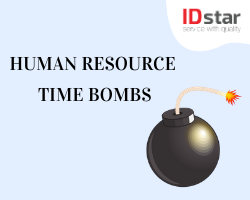6 January 2020
Human Resource Time Bombs

Human resource (HR) leaders are surrounded with so much uncertainty as the world itself is rapidly changing: from the emergence of new technologies, new social issues among millennial’s, and even environmental issues. For 2020 and beyond, HR management perhaps feels more like navigating through a minefield. According to the Gartner 2020 Future of HR Survey, the three main concerns are to build critical skills, strengthen leadership, and implement organizational design that fits with change management. However, behind each concern, is a problem or “time bomb”.
Building the critical skills simply mean that the company at all times should have people with the right skills so the company can run smoothly and grow. The danger lies in the fact that the so called right skills change so fast nowadays. Today you may have recruited someone with skill A, but in just months, you may need someone with skill B, while the person you recruited might not be able to learn that skill in such a short notice. This creates a serious skill gap. For this reason, HR leaders must always be in sync with the management to identify which skills or positions are needed but prone to change. One of the most reliable solutions for this issue is to partner up with a talent/HR management company, such as IDStar. Therefore, the company can rely on its human resource provider to cover the gap on the fast changing positions. Of course, internally, the company should also try to engage employees in co-creating a change strategy to motivate employees to develop the skills that are in demand, which would also support their career in general.
Strengthening leadership in the company includes developing the current leaders’ capabilities and also in preparing future leaders. Similar to the first point, the required capabilities are changing very fast. As for future regeneration, HR has typically filled the leadership pipeline with potential successors for specific positions or roles. That approach can no longer keep up with the demands of today’s uncertain, rapidly changing times. While leadership regeneration for now is still up to each organization, but to cope with the rapid changes in capabilities, there is a new approach: complementary leadership. Complementary leadership intentionally partners a leader with one or more leaders based on complementary skill sets. By the way, this isn’t simply reassigning responsibilities or delegating unwanted tasks. In the current volatility that many leaders face, complementary leadership can help provide breadth, depth, and agility so leaders can acquire new capabilities faster.
Organizational design, or also known as organization structure, used to be something quite rigid. Again, times are changing; the trend now demands for an agile company. The old top-down approach in change management is no longer sufficient. HR leaders now realize that the co-creating change strategy is also needed here. The HR department need to engage the right employees at the right time in the right way, thus making those employees become active participants in making and shaping change decisions. However, we do realize, it’s still a long journey ahead. The entire organization will need to change the way it communicates and its workflows.
So in short, some solutions have emerged, but the “time bombs” are still ticking.






